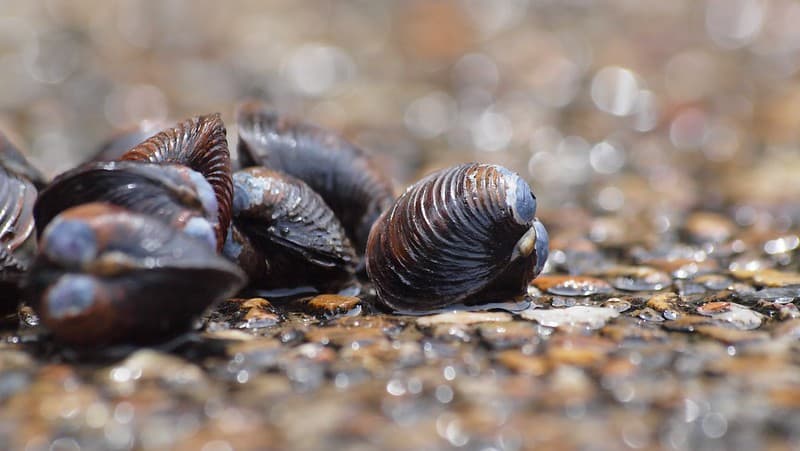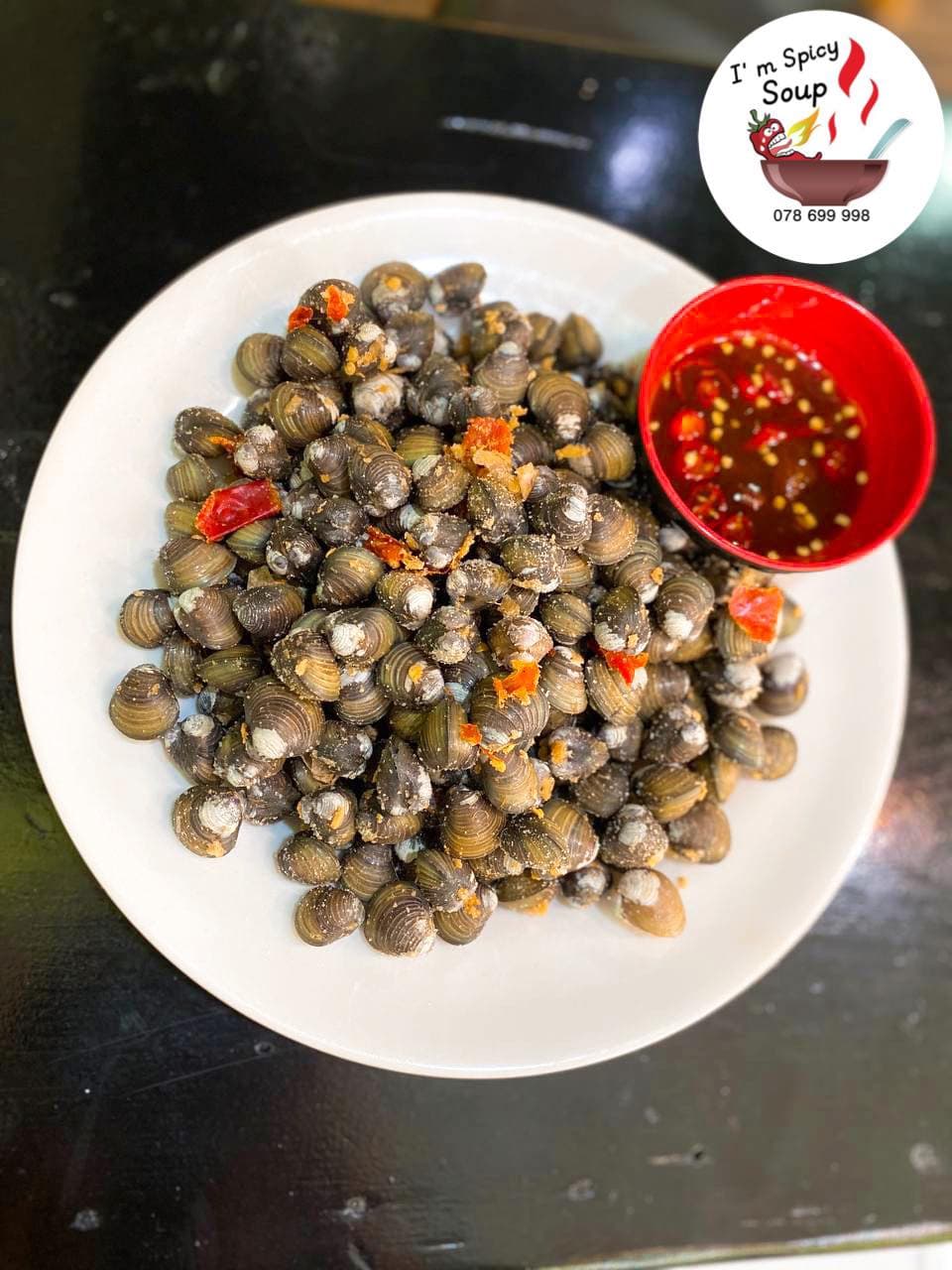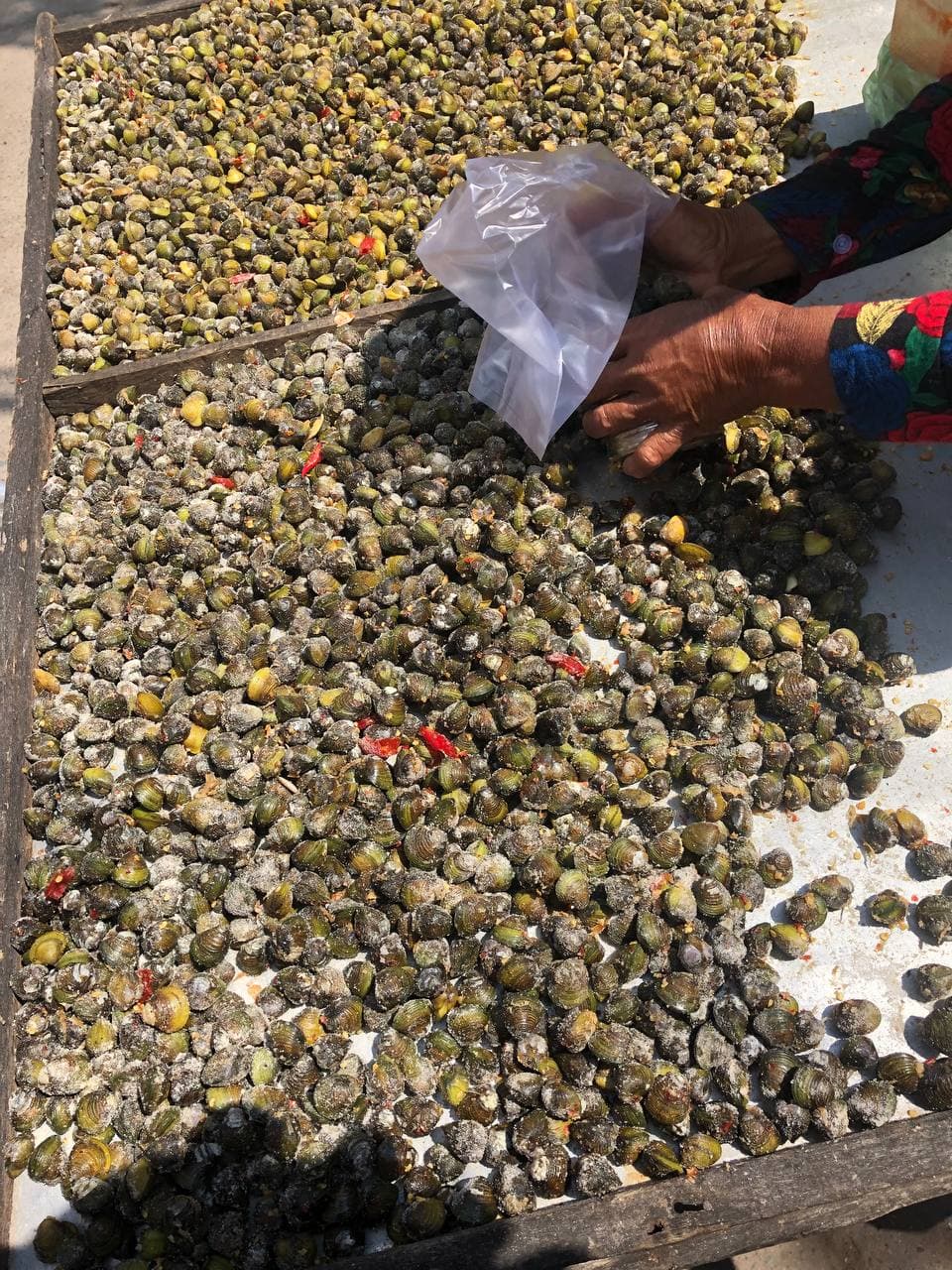It is not uncommon to come across many sun-dried river basket clams on a sunny day in Cambodia. Vendors will sell you anywhere between 4000 – 10,000 Riel per can (recycled condensed milk can), depending on the seasoning and sizes. These river clams are one of the most popular snacks and even meals (usually for lunch) in Cambodia. Here are a few things about sun-dried river clams that you might want to know.
Appearance

River clams have two hinged parts that join together by a ligament. The shell of these clams are typically made of calcium carbonate, and they can completely close to prevent water from getting in. The special thing about their shells is that they are resistant to damage, deterioration, and attacks from predators.
Corbicula Moreletiana are asexual so they can reproduce by themselves without the need for a partner at all. Each river clam can lay up to 570 eggs per day or up to 68,000 eggs per year. The eggs are in a form of small particles that will drift in the water until they mature.
Feeding & Habitats

River clams feed by filtering to get tiny organisms and algae, and this is also beneficial by purifying the water. They are more common in sandy areas where they live and reproduce. Basket clams live in brackish water and fresh water, and collecting them can be done so easily. Usually, people simply scoop them by using baskets to filter the sand and water. They are common in most waters across the country but the largest clams are more in Kampung Cham and Steung Treng provinces.
Use

River basket clams are common food and snacks in Southeast Asian countries such as Cambodia, Thai, and Vietnam. In Cambodia, Asian clams or river clams are often salted and mixed with chili before being sun-dried. These clams are also common in other cuisines as well such as pan-fried and stews. Before, the elderlies even use the clams as quicklime to consume with areca palm as well.
Related Post: Things You Should Know About Common Hill Mynas
